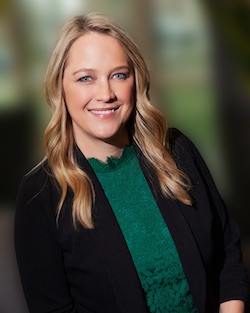Walls & Ceilings - January 2023

February 23, 2023 - West Chester, Ohio – ClarkDietrich, the largest manufacturer of cold-formed steel framing products, interior and exterior finishing products and accessories in North America, has announced the promotion of Jennifer Edgar to vice president of marketing. Edgar assumes the role following the retirement of Terry Westerman, who has held the position since 2005.

Recent changes to the International Building Code (IBC) and International Residential Code (IRC) are bringing new drainage requirements to a larger portion of the country, causing builders and contractors to rethink how they approach building envelope design. In an article published in the January issue of Walls & Ceilings magazine, senior product manager Chris K. Little explores these code updates—specifically how they apply to stucco-clad exteriors—and explores strategies builders and contractors can use to incorporate bulk water drainage into their projects.
The Box Header Clip (BHC) is designed to eliminate field cutting metal track into sections. The BHC clip is pre-punched to promote a quick and accurate installation. It is available in a variety of sizes and thicknesses to accommodate different application requirements.
Walls & Ceilings - January 2023

Although residential projects are smaller scale when compared to most commercial builds, they are no less challenging, and still require high-quality materials and craftsmanship. This is especially true regarding exterior finishing.
Modern exterior siding options for homes and commercial real estate buildings are designed to last, without compromising on looks. Some materials are made to replicate the look of natural materials, like wood and stone. But that doesn’t mean they concede durability.
No home building project is finished until the exterior finishing process is completed.
It’s no secret that construction prices are much higher than they used to be. In fact, nonresidential construction input prices are 20.3% higher than they used to be. These soaring prices can tempt many contractors to look for cheap alternative building materials when building exterior walls.
When it comes to choosing the right exterior finishing material for a home, there are a few different factors to consider. For many people, attractiveness is the most important thing; but it’s also important to consider how well the material will withstand the elements over time, and keep your family both comfortable and secure.
Modern home design and construction have access to a huge variety of exterior finishing options.